

Space Tourism Posters
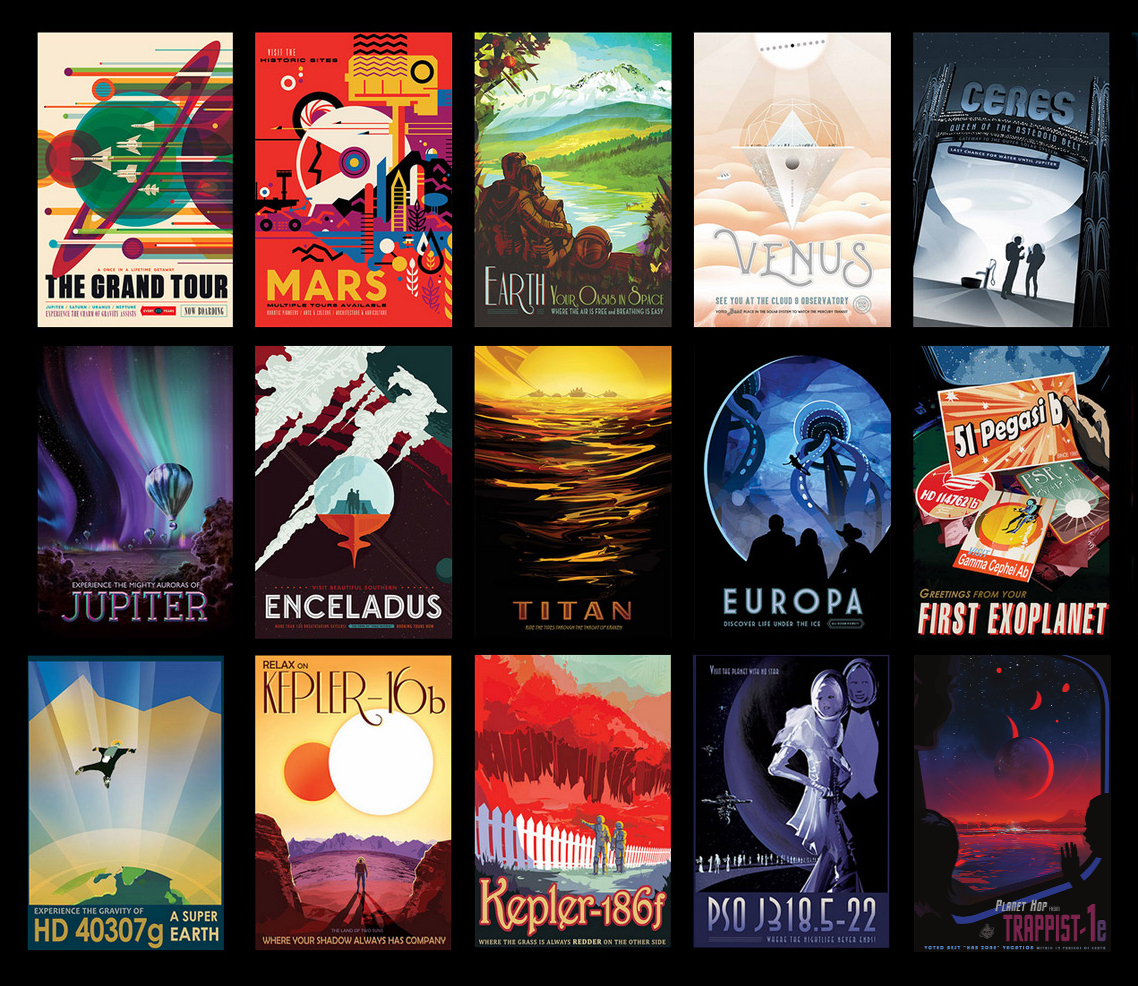
Take a virtual trip to alien worlds, and maybe even plaster your living room with new, futuristic space tourism posters. View all posters
A creative team of visual strategists at JPL, known as "The Studio," created the poster series, which is titled "Visions of the Future." Nine artists, designers, and illustrators were involved in designing the 14 posters, which are the result of many brainstorming sessions with JPL scientists, engineers, and expert communicators. Each poster went through a number of concepts and revisions, and each was made better with feedback from the JPL experts.
David Delgado, creative strategy: The posters began as a series about exoplanets – planets orbiting other stars – to celebrate NASA's study of them. (The NASA program that focuses on finding and studying exoplanets is managed by JPL.) Later, the director of JPL was on vacation at the Grand Canyon with his wife, and they saw a similarly styled poster that reminded them of the exoplanet posters. They suggested it might be wonderful to give a similar treatment to the amazing destinations in our solar system that JPL is currently exploring as part of NASA. And they were right!
The point was to share a sense of things on the edge of possibility that are closely tied to the work our people are doing today. The JPL director has called our people "architects of the future."
As for the style, we gravitated to the style of the old posters the Works Progress Administration (WPA) created for the national parks. There's a nostalgia for that era that just feels good.
Joby Harris, illustrator: The old WPA posters did a really great job delivering a feeling about a far-off destination. They were created at a time when color photography was not very advanced, in order to capture the beauty of the national parks from a human perspective. These posters show places in our solar system (and beyond) that likewise haven't been photographed on a human scale yet – or in the case of the exoplanets might never be, at least not for a long time. It seemed a perfect way to help people imagine these strange, new worlds.
Delgado: The WPA poster style is beloved, and other artists have embraced it before us. Our unique take was to take one specific thing about the place and focus on the science of it. We chose exoplanets that had really interesting, strange qualities, and everything about the poster was designed to amplify the concept. The same model guided us for the posters that focus on destinations in the solar system.
Lois Kim, typography: We worked hard to get the typography right since that was a very distinctive element in creating the character of those old posters. We wanted to create a retro-future feel, so we didn't adhere exactly to the period styles, but they definitely informed the design. The Venus poster has a very curvy, flowy font, for example, to evoke a sense of the clouds.
Credits for the posters Creative Strategy: Dan Goods, David Delgado
Illustrators: Liz Barrios De La Torre (Ceres, Europa) Stefan Bucher (Jupiter Design) Invisible Creature (Grand Tour, Mars, Enceladus) Joby Harris (Kepler 16b, Earth, Kepler 186f, PSO J318.5-22, Titan) Jessie Kawata (Venus) Lois Kim (Typography for Venus and Europa) Ron Miller (Jupiter Illustration)
You are using an outdated browser. Please upgrade your browser to improve your experience.
Exoplanet Travel Bureau
Even the closest exoplanets are too far away to visit. But... what if they weren't? We worked with NASA scientists, futurists and artists to imagine exoplanet tourism. Choose your adventure with guided tours, in English and Spanish. Read along or turn your sound up as you scroll through.

Lee 6th Grade Research Projects: Solar System Travel Brochure
- North Korea
- NATO & Warsaw Pact
- Cultural Fair
- East Asia Research/Map Project
- Religions in North Africa and Southwest Asia
- Cuba Timeline Project
- African Tribal Cultures
- African American History Month Project
- Am History Events Opposing Viewpoints Presentation
- Springboard Unit 5 Researching and Presenting an Item That Has Changed Over Time
- Expository Text
- Biographical Essay
- Solar System Travel Brochure
- Space Exploration Electronic Time Line
- Energy Sources
- Theatre as a Reflection
- Dyslexia Research
- Book Reviews
- Foodborne Illness
- Music Careers
- Composer/Performer Project
- Artists Research
- French Speaking Countries Project
- Solar System Assignment and Grading Rubric
- Travel Brochure Template in PPT
Iscience . 1st ed. Columbus, OH: McGraw-Hill Education, 2015. Print.
For library books, Go to Destiny Discover
Find the book, click on the title, Click Cite This Title. Click Copy. Paste (Ctrl V) into your brochure.
- CiteThisForMe Use this only for websites. You will need to click Website and paste the url into the box.
- Destiny Discover A great way to use Destiny, our online catalog, to find many great sources for your research topic. Click the link, log in to Destiny with your username (id#) and password(last name). Search for your keywords. Select Databases to find great articles, images, ebooks, and kid friendly magazines. Remember, you can also save the ones you like to your favorites and then create your Bibliography with the click of a button.
- Encyclopedia Britannica
- Research in Context
- SIRS Discoverer
- Science in Context To find resources for junior high students, click on the Resource Type link (ie.Reference) to view all titles. Sort results list by Content Level. Select the titles with the green dots.
Books in the Library
Solar System, Montage.. Photography. Encyclopædia Britannica ImageQuest. Web. 12 Feb 2014. http://quest.eb.com/images/300_2292307
- << Previous: 6th Science Projects
- Next: Space Exploration Electronic Time Line >>
- Last Updated: Feb 14, 2024 2:21 PM
- URL: https://cchs.libguides.com/Lee6th
We have completed maintenance on Astronomy.com and action may be required on your account. Learn More

- Login/Register
- Solar System
- Exotic Objects
- Upcoming Events
- Deep-Sky Objects
- Observing Basics
- Telescopes and Equipment
- Astrophotography
- Space Exploration
- Human Spaceflight
- Robotic Spaceflight
- The Magazine
Planetary tours: The backpacker’s guide to the solar system
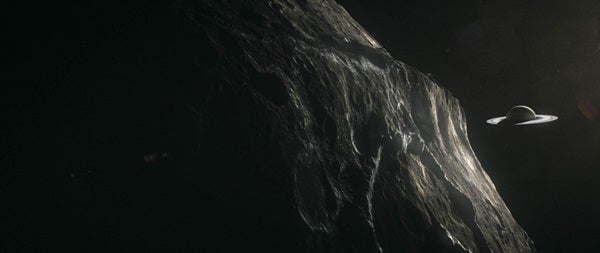
Space is harsh. From damaging radiation to deadly gases and drastic temperature changes, pretty much any environment beyond Earth can kill you at a moment’s notice. Yet our cosmic backyard boasts natural wonders that rival the greatest found on terra firma.
And, one day, when we have the technology for deep-space rocket launches, suitable protective gear, and enough provisions to last the average hiker, and any number of X factors – lucky adventurers may get to hike these solar system monuments.
It’s a far future vision, of a sort of Interplanetary Parks Service, where an extraterrestrial great outdoors beckons you toward adventure.
The Grandest Canyon
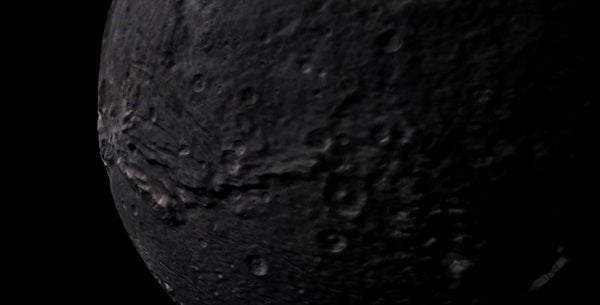
Travel to Pluto’s moon Charon and one feature really sticks out: Serenity Chasma, a 620-mile (1,000 kilometer) long canyon stretching across the surface. It reaches depths of 5.6 miles (9 km), giving it an abyss far greater than the just-over-a-mile-deep Grand Canyon National Park in Arizona.
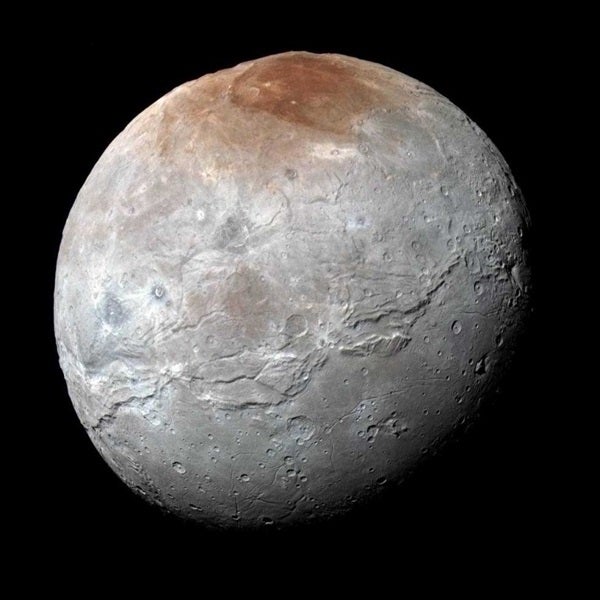
Consider Serenity Chasma the grandest canyon any hiker could traverse, and with the proper provisions, the hike of a lifetime that would take months to complete the entire stretch. But hey, it’s less than one-third the length of the Appalachian Trail.How, exactly, did such a big feature form? Charon was probably once an ocean world, like Europa and Enceladus, fellow outer solar system moons circling Jupiter and Saturn.
But over time, Charon’s internal heat settled down, freezing the ocean below. That process would have forced the moon to bulge out in certain areas. And its surface, which may once have been a relatively smooth ice shell, cracked as the water ice expanded, acting like a soda can left in the freezer.
That expansion left a giant scar across the surface of the world.
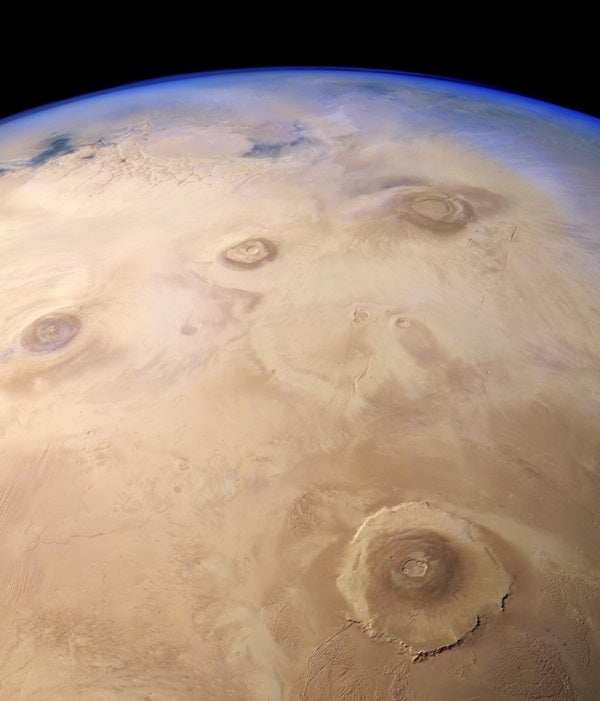
Easily climb the solar system’s tallest mountain
On Mars, one peak towers tall over all others: Olympus Mons. Its the highest mountain on any planet in the solar system* with a summit stretching 13.6 miles (20 km) high, or 2.5 Mount Everests.
But while Everest is an endeavor to climb, rising dramatically high up into the sky, Olympus Mons rises up gradually, roughly five degrees at a time.
That means that you could ascend one of the mightiest mountains in the solar system with only moderate hiking skill. While it takes multiple small hauls to acclimate to Everest’s air pressure decreases, there’s already no air on Mars, so you’ll already be carrying your own oxygen.
At the end of the journey, you could say you hiked up and back down a mountain the size of France.
*Rheasilvia, a mountain on the asteroid Vesta, is 14 miles (22 km) high.
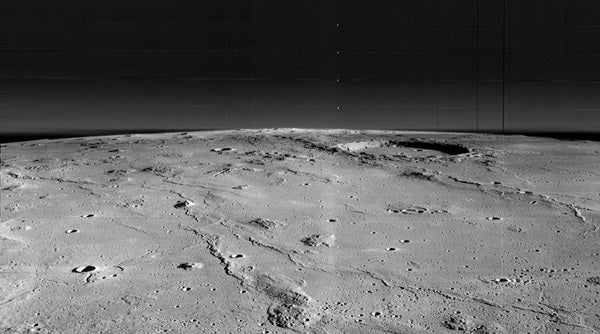
NASA’s Lunar Orbiter 2 caught this image of the Marius Hills as it circled the moon in 1966.
The hills of the Moon
If Apollo 15 hadn’t landed at Hadley Ridge, and had instead chosen the alternate Moon landing site in the Marius Hills, humans may have already hiked our next destination.. The Marius Hills sit within Oceanus Procellarum, the largest of the lunar “seas.” Here, as the name implies, a series of small hills dot the landscape, creating the perfect playground for a series of day hikes, and ancient volcanic rocks aplenty for the amateur geologists.
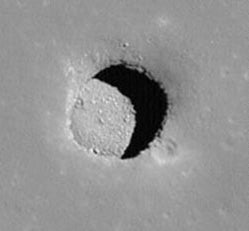
A hole in the moon could make the perfect lunar home.
And while the regions’ ridges would make for interesting exploration, the real selling point are the volcanic tubes. At least one — now known simply as the Marius Hills Hole — is nearly 300 feet deep, giving a potential hub for human habitation.
Just imagine: you hike the hills by day, potentially exploring shallow canyons nearby. And at night, you return to your camping lodge, a pressurized outpost protected from the harsh radiation of space. A 200-foot dome at the top of the ancient lava-formed feature stares back at Earth and the stars.
Not only is the area home to some of the best hiking in the solar system — it’s some of the best lodging, too.
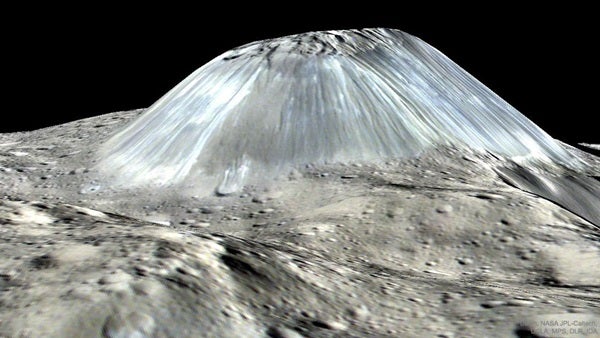
The loneliest mountain
Mountains are plentiful on Venus, Mars and Earth. It makes sense. Each of these planets has a rich geological history — the kind that gives rise to volcanoes and mountains and more. So, there are multiple choices of mountain hikes on these three planets. But on a dwarf planet called Ceres, the largest asteroid in the asteroid belt, there’s one — and only one — choice.
Meet Ahuna Mons. It’s about 2.5 miles (4 km) high, and it stretches about 12 miles (20 km) wide. It was likely formed when frozen mud pushed its way to the surface of Ceres, piling up into a high mountain made of salt, water ice, clay and other minerals. All this happened only a few hundred million years ago, making it also one of the newest hiking options beyond Earth.
Just imagine: Thanks to gravity just a fraction of Earth’s and the gradual slope of Ahuna Mons, you could scale the only mountain of an ancient protoplanet, staring across its highest point, knowing that you’re walking on the dust-encrusted surface of what was once an ocean world.
Iapetus’ equatorial divide
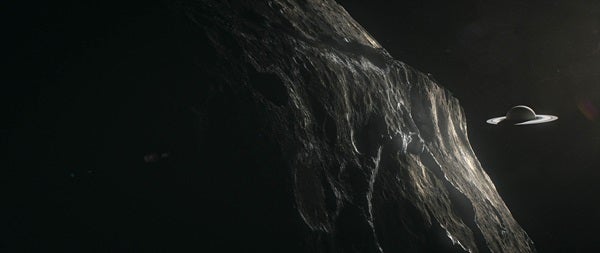
The Ringed Planet rises over the strange ridge of its moon Iapetus in this still from a computer-animated film released by NASA’s Cassini team.
Lots of intrepid hikers want to explore America’s Continental Divide, the area in the Rocky Mountains (and several other mountain ranges) where our continent buckles, leaving beautiful terrain in its wake. It’s a gateway to the Western United States.
But North America’s Continental Divide has nothing on the equatorial ridge of Iapetus, which divides an entire world for an 800 mile (1,300 km) stretch, encompassing three-quarters of the equator.
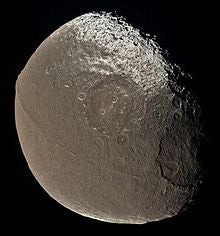
If you started at one end, you’d make the gradual climb up one the ridge’s edge, eventually scaling to heights of 12 miles (20 km). In some areas, a thick gunk dominates your view — probably material thrown off from Phoebe, a nearby moon that rains onto the surface of Iapetus.
But when you glance skyward toward Saturn, you’ll get a view that other large moons in the system just can’t match — Saturn’s glimmering rings. Go ahead, snap a picture or three. Maybe even a selfie.So what made this unusual formation? Hypotheses vary, but at least one suggests that it could be from the collapse of a brief series of sub-satellites (that’s right, moonmoons) that fell back along the equator of Iapetus, creating the giant ridge seen today.
Another idea is that it may have also formed thanks to an early rapid rotation rate that threw it out of a round shape. It could have even seen a similar ice buckling to Charon.
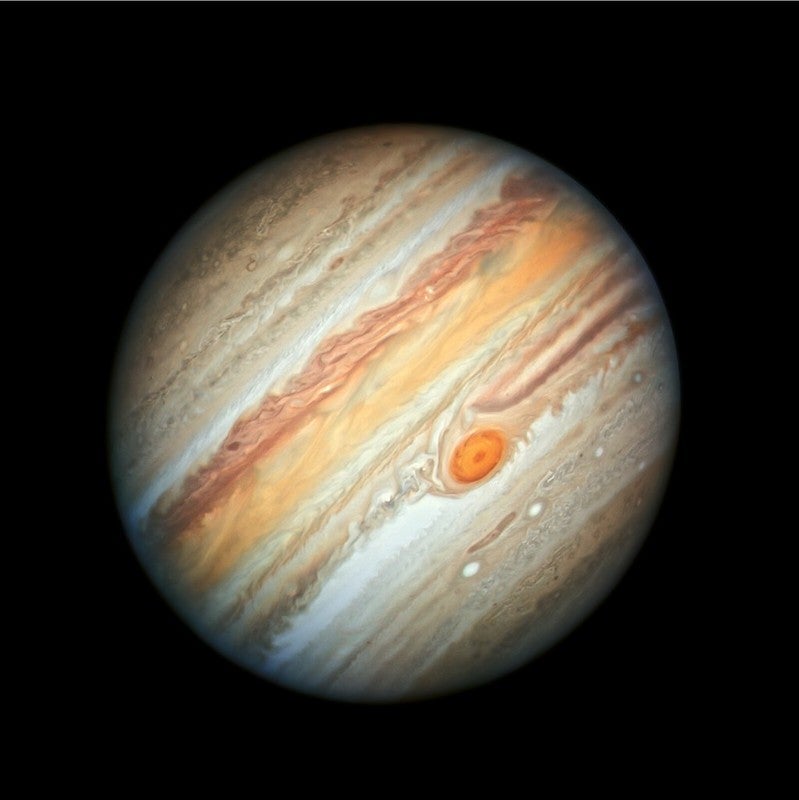
How old is each planet in our solar system?
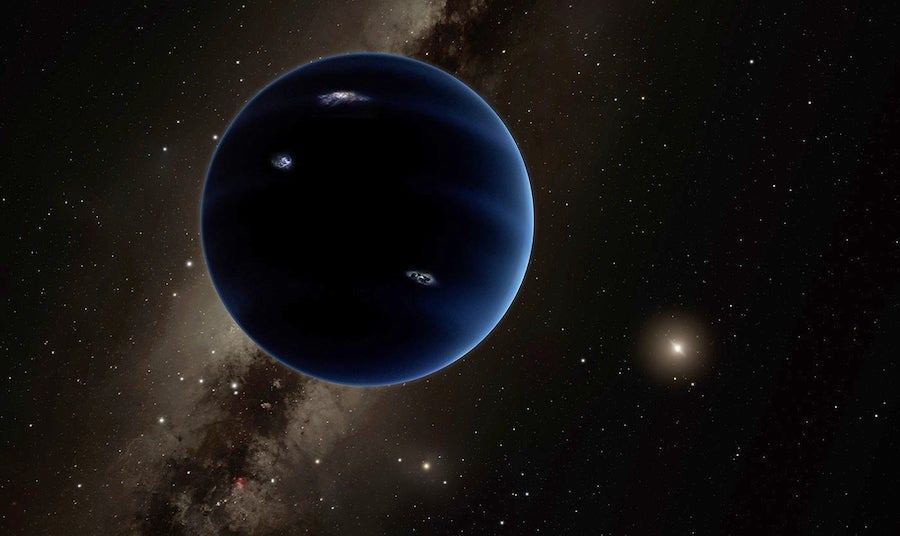
Could we find Planet Nine using JWST?
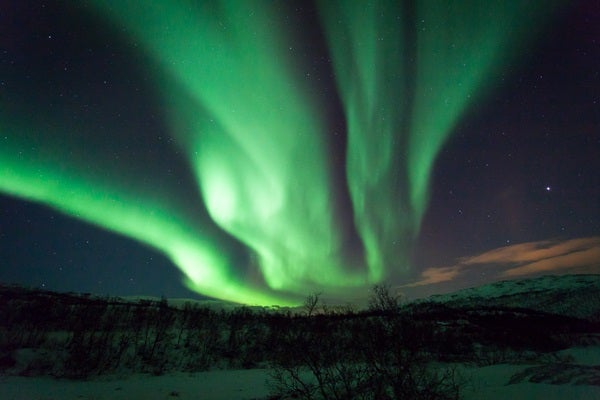
A solar storm the size of the Carrington Event could knock out the backbone of the Internet
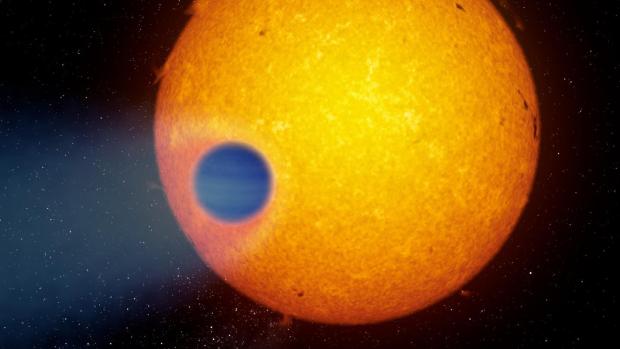
WASP-69b — and its weird tail — help us understand the cosmos
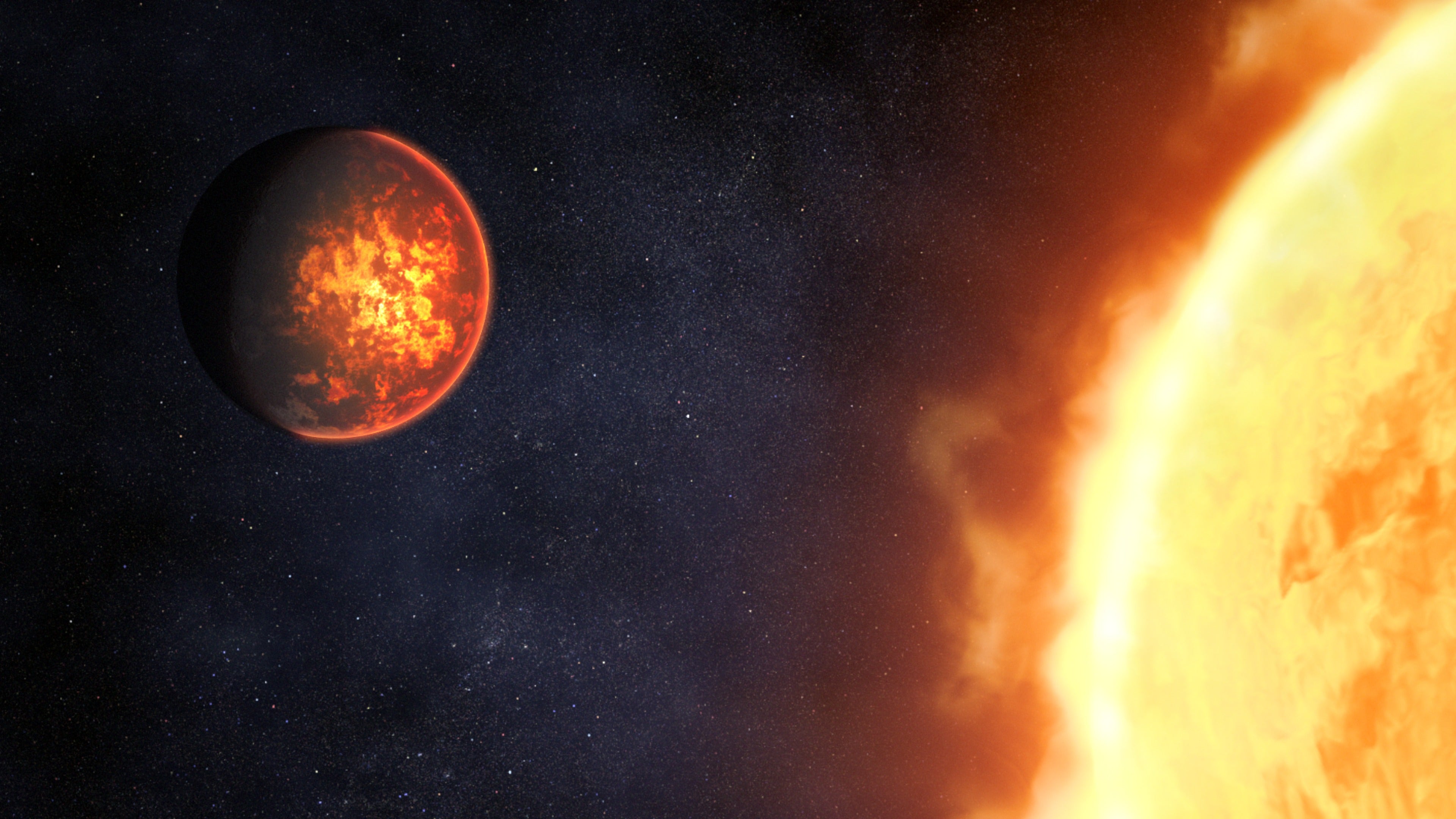
At last! JWST finds signs of a thick atmosphere around a rocky exoplanet
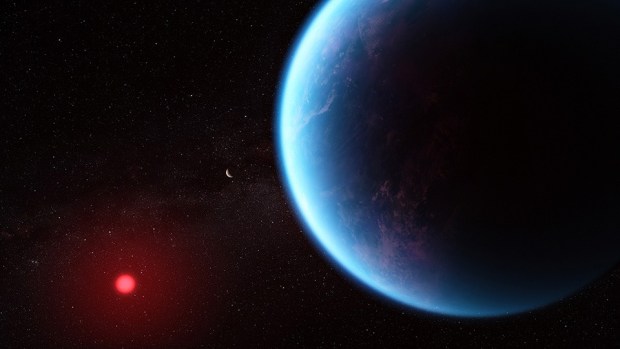
Possible hints of life found on exoplanet K2-18b – how excited should we be?
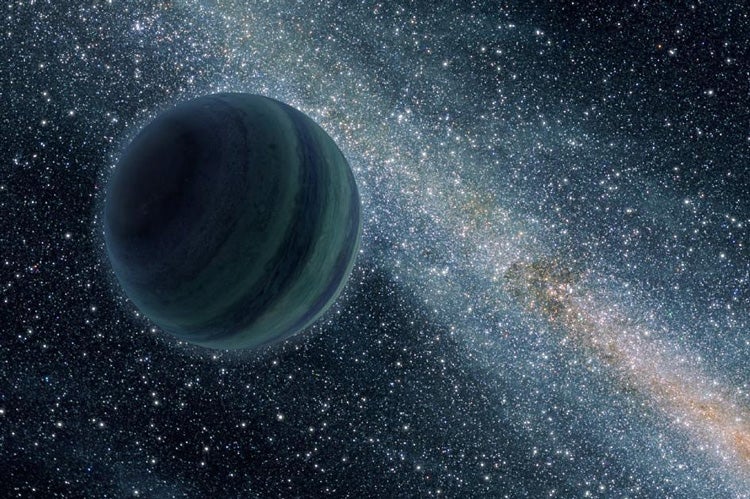
Does Planet Nine exist? The new evidence says yes.
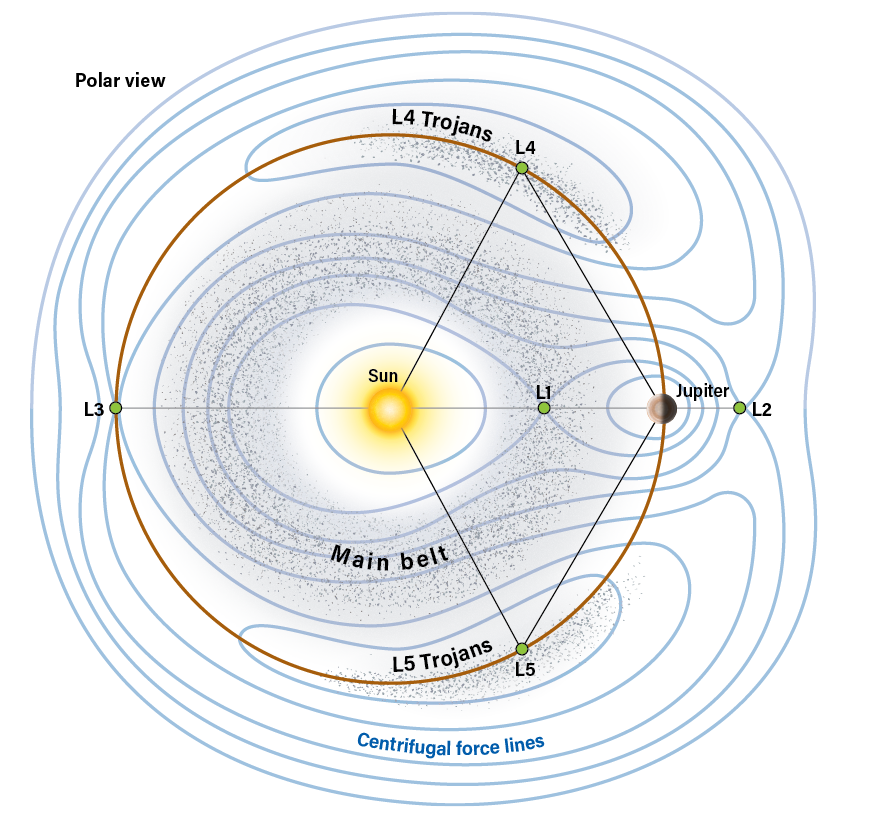
How closely packed are Jupiter’s Trojan asteroids?
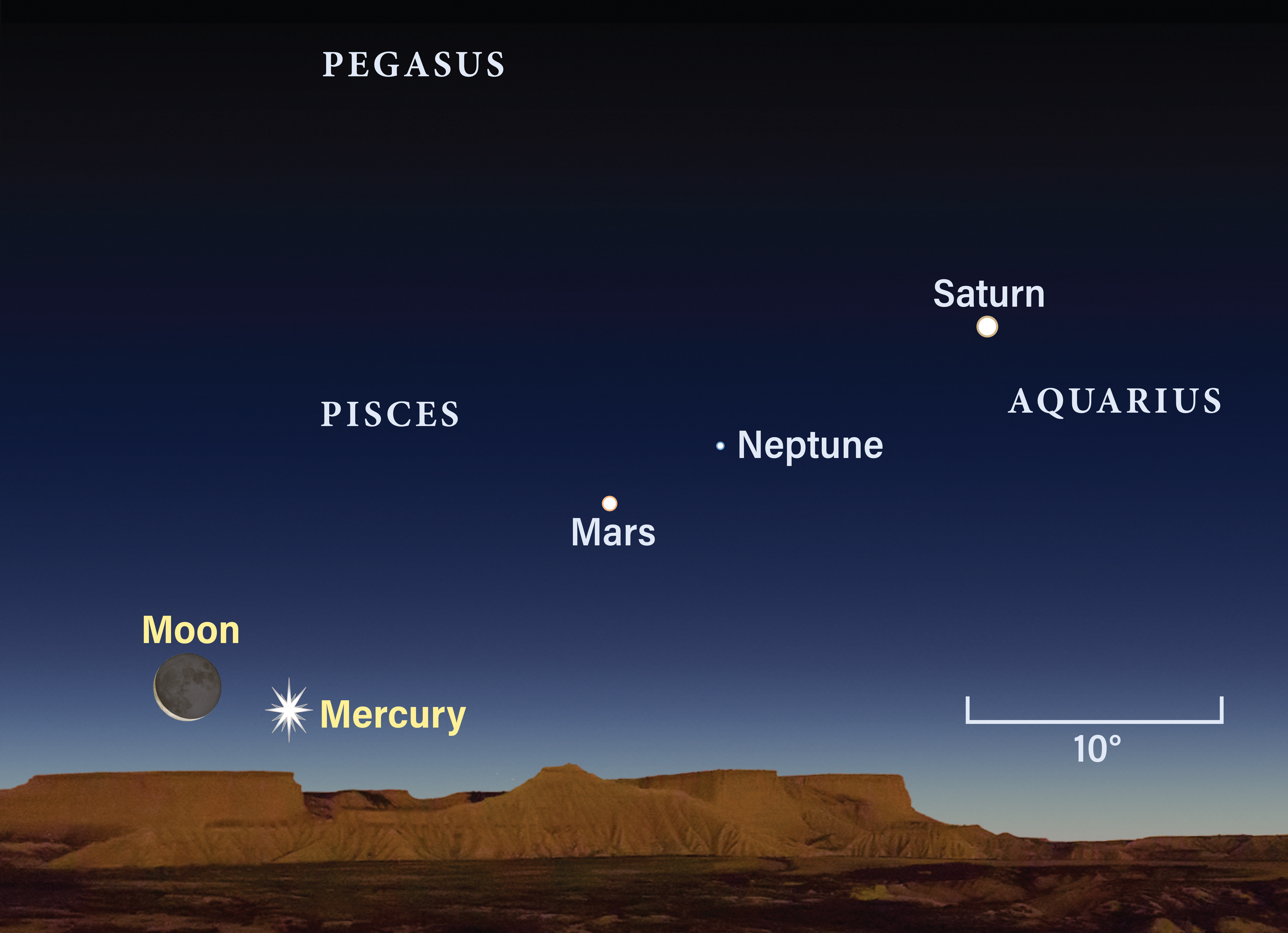
Planets on parade: This Week in Astronomy with Dave Eicher
- Mobile Site
- Staff Directory
- Advertise with Ars
Filter by topic
- Biz & IT
- Gaming & Culture
Front page layout
Not so lonely planets —
A travel guide for our future solar system, the vacation guide to the solar system is from a future we wish were now..
John Timmer - Jul 9, 2017 2:00 pm UTC

Humanity's expansion into the Solar System seems to be a recurrent theme around here. We dedicated a podcast to The Expanse and reviewed the book Beyond Earth , which imagines humanity colonizing Saturn's moon Titan. Recently, we got a chance to look at a different take on humanity's travels to other worlds, one that goes a step beyond political drama and existential threats.
Further Reading
Instead, it's all about planetary tourism. Set up like a travel guide, with chapters for each planet and Pluto, Vacation Guide to the Solar System imagines a future in which people spend a couple of decades to do a round-trip to Saturn and don't want to miss any of the major sights when they get there. And, while Vacation Guide is anything but a hard science book, you'll probably end up smarter for having read it. Which is the entire point.
Guerillas in space
The book's authors, Olivia Koski and Jana Grcevich, belong to a group called Guerilla Science , which uses art, installations, performances, and more to try to insert a little science into the lives of people who weren't necessarily looking for it. The group started the Intergalactic Travel Bureau as a bit of a performance—members of Guerilla Science would act as travel planners and ask people what they were interested in before suggesting a planet that would suit those tastes. Eventually, the made-up bureau morphed into an actual storefront in Manhattan .
Now, the Intergalactic Travel Bureau has released a book, one that adopts most of the tropes of a typical tourist guide. So, for each planet, there's a page of basic statistics on the destination, like how Venus goes around the Sun at 78,000 miles an hour. Or how its runaway greenhouse means that the high, low, and median temperatures are all the same. Or how its slow rotation means a day drags on for over 2,800 hours.
Vacation Guide to the Solar System has sections on when to go to each world (Pluto's highly elliptical orbit makes getting there while it's close key) and a detailed discussion of travel times, as well as how to travel around the planet once you get there. For those planets where the surface is accessible and not made of metallic hydrogen, there's a discussion of precautions you need to take to survive seeing the sights.
Thanks to the ESA, NASA, and the Soviet space program, we have a remarkably good idea of what those sights are. So each chapter has a long list of craters, cloud formations, and other strange terrain that no space tourist should miss. Even if the planet doesn't have a surface, it's guaranteed to have moons that do. Koski and Grcevich imagine all sorts of mountain-climbing challenges, along with some truly sci-fi pastimes, like low-gravity baseball or bungee jumping through the depths of Saturn's atmosphere from one of its floating cities.
The authors do cut the verisimilitude ever so slightly short, though. Unlike in a real travel guide, Vacation has no tips on where to stay or eat. There is, however, a long discussion of the unpleasantries of space travel, making it unclear why anyone would want to spend more than a decade to get to Pluto. Though the authors helpfully note that a lot of tourists make this their final journey, since the round trip is nearly half a lifetime.
Does it travel well?
Let's be clear: the authors' dedication to staying in travel-guide mode is admirable and definitely the biggest charm of the book. That said, most people don't read a travel guide cover-to-cover, because it can get more than a bit repetitive. For this topic, the risk of repetition is enhanced by the fact that most of the striking features NASA has identified off-world are variations on craters, chasms, and cliffs. Comparisons to Everest and the Grand Canyon abound.
That said, Vacation is not a book that suffers if you put it down for a bit and come back to it. There's no plot, so forgetting details of an earlier chapter is irrelevant.
And those details are definitely in keeping with the overall goal of sneaking science in to what's partly a work of science fiction. Jana Grcevich is an astronomer, and the material in the book was vetted by multiple other astronomers. The basic information is all solid.
Where Vacation really shines, however, is that Koski and Grcevich have thought through the consequences of those facts carefully. Like noting there's a moon (one of Mars', I think) that's small enough that someone with reasonable arm strength can throw a baseball into orbit. But the attention to detail goes much deeper than that.
For example, they note that we can't build anything that would survive conditions anywhere close to Saturn's surface, which means lighter-than-air ships are essential. But Saturn has a low-density atmosphere that's mostly hydrogen. So, for a dirigible to work on Saturn, its entire interior would have to be a vacuum. In contrast, Pluto's low gravity and frigid nitrogen ices make transport a snap. Simply pump a bit of waste heat under your hovercraft, and it'll explosively evaporate the surface, allowing you to speed across the dwarf planet.
Vacation has plenty of other examples, and I'm having a hard time avoiding spoiling the best of them (I've deleted at least three sentences with others). To see more, you'll have to pick up the book. If you do, it's a fun, new way to look at our Solar System. But, if you're like me, that'll mix with a wistfulness about how you'll never actually see it all.
reader comments
Channel ars technica.
Exotic Cosmic Locales Available as Space Tourism Posters

Fourteen space travel posters of colorful, exotic cosmic settings are now available free for downloading and printing.
Imagination is our window into the future. New travel posters from NASA's Jet Propulsion Laboratory, Pasadena, California, envision a day when the creativity of scientists and engineers will allow us to do things we can only dream of now.
You can take a virtual trip to 14 alien worlds, and maybe even plaster your living room with planetary art, via the new, futuristic space tourism posters. The posters are available free for downloading and printing at:
http://www.jpl.nasa.gov/visions-of-the-future/
Last year, five posters depicting planets beyond our solar system were introduced as part of JPL's Exoplanet Travel Bureau series. They are included in the latest set of 14 posters, which also show such locales as Mars, Jupiter's moon Europa, Saturn's vapor-spewing moon Enceladus, and the dwarf planet Ceres.
The posters are the brainchild of The Studio at JPL, a design and strategy team that works with JPL scientists and engineers to visualize and depict complex science and technology topics. Their work is used in designing space missions and in sharing the work of NASA/JPL with the public.
The California Institute of Technology in Pasadena manages JPL for NASA.
More information about JPL is at:
http://www.jpl.nasa.gov

News Media Contact
Jet Propulsion Laboratory, Pasadena, Calif.
818-354-0880

General public guests are strongly encouraged to purchase advance tickets. Reserve Tickets
Members receive free admission to the Museum 364 days a year! Become a Member
Take your Museum journey home with you. Visit the Museum Shop

planetarium
Cosmic Journey
Volcanoes tower 80,000 feet above a barren surface. Monstrous hurricanes rage for 400 years. And multicolored rings sit suspended in air.
In Cosmic Journey: A Solar System Adventure , you'll travel through our solar system faster than the speed of light, taking in the wonders of the planets and their moons.
For Educators
- Cosmic Journey: A Solar System Adventure Educator Guide
Show Distribution
Cosmic Journey: A Solar System Adventure can be licensed for playback at your digital planetarium or flat screen theater.
For more information, download the Cosmic Journey: A Solar System Adventure brochure , or contact the sales team at [email protected] or 303.370.8352.
Cosmic Journey: A Solar System Adventure is a production of the Denver Museum of Nature & Science, funded in part by Raytheon Company and the Scientific and Cultural Facilities District (SCFD). Distributed by Denver Museum of Nature & Science.
This browser is no longer supported. We have detected you are using an older version and less secure version Internet Explorer. Please download Google Chrome , Firefox or if using Windows 10, you may use Microsoft's Edge browser..
This browser is no longer supported. We have detected you are using a less secure browser - Internet Explorer. Please download or use Google Chrome , Firefox or if using Windows 10, you may also use Microsoft's Edge browser.
Solar Views The Nine Planets: A Multimedia Tour of the Solar System Star Child
Encyclopedia of the Solar System , (1999). Ed. Weissman, Paul R.; McFadden, Lucy Ann; and Johnson, Torrence V. Academic Press.
The NASA Atlas of The Solar System , (1996). Greely, Ronald; Balston, Raymond; and Geological Survey. Cambridge Press.
Grading Rubric for Solar System Travel Brochure
This assignment is worth 100 points. If brochures are constructed by hand, see your teacher for specific guidelines.
GRAND TOTAL: __________________________
INFOGRAPHIC
Solar system supplement.
The September 2021 issue of National Geographic Magazine includes an article and poster providing scientists’ latest understanding of our solar system, especially the small objects discovered in the far reaches beyond Pluto. This Idea Set provides fun, engaging ways to deepen your students’ understanding of topics related to the information presented in the article and poster.
Earth Science, Astronomy
Loading ...
Any two-dimensional representation of the solar system, as provided in the poster, makes it difficult to comprehend the vast size and distances involved. The first three ideas suggest ways to make the sizes and distances more concrete. The next two activities provide a fun way to learn more about the nature of each planet without focusing on memorizing a bunch of information. What we learn about the Sun depends on what kind of light (wavelength) we use to observe it. The last two activities provide a real-time look at the sun in visible light and then what we can learn from observing it in other kinds of light.
*Italicized text signifies comments added by National Geographic Explorer, Debarati Das .
Comparing the Size of the Planets
Everyone loves to play with playdough. This activity has students work in small groups to use a large ball of playdough to first predict how much of the ball goes into each planet, and then divide up the ball according to these instructions to see how well they did with their predictions. It also works well as a teacher-led demonstration if obtaining a large amount of playdough is a challenge. If you want to add Eris, another dwarf planet beyond Pluto, save a piece of playdough in Step 7 about the same size as Pluto. A fun follow-up activity is to ask the class how many Mars-shaped playdough balls it takes to make a playdough Earth. Most people are amazed that it takes more than six Mars balls to produce the Earth. Another fun way to explore the relative size of the planets is to use different food items to represent each planet. Learn more about this option at Wild About Here , or at this more detailed version .
Comparing the Distance Between the Planets
This activity lets your students take the solar system home in their pockets. It uses a meter-long strip of adding machine tape to provide a fun way to see the relative distance between the planets, including the dwarf planet Pluto. To add Eris, one of the new dwarf planets, to the model, you will need two more meter-long strips of adding machine tape added at the end. This video is another way to introduce the vast distances between the planets and emphasizes that the planets are not in a straight line as is implied in many diagrams. For advanced students, you might challenge them to determine the easiest way to go from Earth to other planets, and how long it would take. This activity shows that the planets are not in a straight line, are moving with respect to each other, and are faster to reach when they line up in a certain way.
Comparing Both the Size and Distance in the Same Model
To truly comprehend the vast distances between the planets compared to the planetary sizes, one must build a model solar system that uses the same scaling factor for both the distance between the planets and the planetary sizes. This can be a great mathematics skill builder as students calculate the distances and sizes to fit inside your playground or school neighborhood. This activity makes it even easier by doing the calculations for you, once you decide on the scaling factor. Your students can easily change the scaling factor to see what works to make planets large enough to see and also provide distances that can be easily reached. Don’t be surprised when you want the smallest object to be at least 1mm and you find that you have to walk 2.5 km (about 1.5 miles) to reach Pluto. This version of the activity discusses alternatives of using a map of the school's neighborhood if you don’t want to walk that far. After doing the activity, your students will enjoy seeing this video of a model solar system built in the desert. This other video also nicely reinforces the challenge of trying to show the planets’ sizes and the distance between them at the same time.
Invent an Alien Creature
Nothing is more boring than writing a typical research report. This activity has students research the nature of the planets by creating a creature that could live on one of the planets based on the planet’s physical characteristics. What might a Jovian creature look like that has to deal with 2.5 times Earth’s gravity and no solid surface to walk on? While the Martian is a two-dimensional image, it is even more fun to have the students build three-dimensional versions of their aliens. This is what students used to do for a nationwide contest in Canada that awarded major prizes like science fairs in the US. See the continuation of this contest in Manitoba, Canada . Of course, your students should use their favorite search engine to find a number of resources. If you are looking for a creative writing connection to this activity, ask the students to write a science fiction or romance story based on their alien. This activity is a great lead-in to a discussion regarding the possibility of life on other planets in our solar system and elsewhere in the universe. National Geographic Explorer, Debarati Das , (pictured above near this section's title), studies the possibility of life surviving deep in subsurface cracks on Mars. She explains more about her work in this video . To get students thinking about what a creature may need to live on another planet you can do this demonstration regarding what happens to a lit candle in a simulated Martian atmosphere.
Travel Brochure for Other Planets
Another engaging way for students to learn information about the planets is to develop a travel brochure for future space farers on a vacation to a planet. What are the for-sure sights to see on a visit to Neptune? What should one wear and be sure to bring to survive the severe weather. This activity requires the same background used for the Invent an Alien Creature activity. It is also a great way to develop oral and visual presentation skills. Now that we have observed or visited a number of the smaller objects in the solar system (e.g. comets, asteroids, Pluto, Eris) you may want to include them as tourist destinations. Students who are enthusiastic about space science and art can also get some inspiration from these beautiful Visions of the Future posters that are artist renditions for future space tourism!
Demotion of Pluto
There was a public uproar in 2006 when astronomers demoted Pluto to a “dwarf planet.” How could astronomers do this to many people’s favorite planet that has the same name as their favorite dog? But this wasn’t the first time a planet was kicked out of the planetary club. In the 1800’s students had to memorize 11 planets instead of the current eight. The National Science Teaching Association (NSTA) developed an excellent learning experience ( Why Isn’t Pluto a Planet Anymore? ) to show how our understanding of the solar system has changed over the centuries. This is also the perfect time to update the traditional mnemonic to remember the order of the planets – My Very Eager Mother Just Served Us Nine Pizzas. Have your students create a new mnemonic without the “Pizzas” or by adding both Pluto and Eris to the list.
Observing the Sun
Observing most astronomical objects is difficult because they are only visible at night and just appear as points of light. But the Sun provides a very bright astronomical object that is easy to observe during the day. First of all and most important, NEVER LOOK DIRECTLY AT THE SUN , as it can damage the back of your eye. While this caution may seem to present a problem, it is easy to project an image of the Sun on to a white piece of paper. Follow the instructions in this video or in this document to build your own Sun projector. Sunspots are easy to see if there are any on the Sun when you look. If you observe over a number of days, you can see the sunspots move due to the Sun’s rotation. Dedicated observers who do this over seven to 14 days can measure the Sun’s rotation rate.
The Sun at Different Wavelengths
The solar image on the poster is a composite of three different images. To help your students understand what this means, have them search on the computer three different ways to see a human leg (e.g., search for an infrared image of human leg, visible light image of human leg, and x-ray of human leg). Visible light shows us what we see with our eyes, while infrared shows the temperature of different parts of the leg. An x-ray image allows us to see the bones under the skin. The composite image on the poster does the same thing for the Sun. Our eyes see what we call the surface of the Sun (the photosphere), although you could not walk on it any easier than on a boiling pot of soup. The photosphere is what you see when you projected an image of the Sun, if you did the Observing the Sun activity. Looking at the Sun at other wavelengths gives us different information and views, just like the different views of the leg. This NASA web page shows what we learn by looking at the Sun using different kinds of light. As a follow up to this activity, this National Geographic video provides a great summary of the Sun’s influence on all objects in the solar system, especially on our modern lifestyle on the Earth. If students get confused about the difference between solar flares and coronal mass ejections, this National Geographic video will help clarify the difference.
Media Credits
The audio, illustrations, photos, and videos are credited beneath the media asset, except for promotional images, which generally link to another page that contains the media credit. The Rights Holder for media is the person or group credited.
Production Manager
Program specialists, specialist, content production, last updated.
February 2, 2024
User Permissions
For information on user permissions, please read our Terms of Service. If you have questions about how to cite anything on our website in your project or classroom presentation, please contact your teacher. They will best know the preferred format. When you reach out to them, you will need the page title, URL, and the date you accessed the resource.
If a media asset is downloadable, a download button appears in the corner of the media viewer. If no button appears, you cannot download or save the media.
Text on this page is printable and can be used according to our Terms of Service .
Interactives
Any interactives on this page can only be played while you are visiting our website. You cannot download interactives.
Related Resources
- help_outline help
iRubric: Solar System Travel Brochure or Poster rubric
- solar system, planet, brochure

Exoplanet Travel Brochure
Oh, the places you'll go
Back to Activities
Introduction.
It’s time travel to space, but where should we go? In this activity you must create a brochure to convince people to come visit an exoplanet of your choosing. Explore some exoplanets then choose your favorite. Come up with a catchy phrase and eye-catching poster that will convince everyone your exoplanet is the exoplanet to explore.
● Any type of paper: notebook, cardstock, printer, and poster board
● Coloring materials: colored pencils, paints, etc
● Info on exoplanets—take a look at this NASA page .
Instructions
1. The first thing I would do is to look at some example brochures of exoplanets. NASA has created some really interesting posters to get your mind going.
2. Next pick out your exoplanet. My suggestion is pick one that NASA has not made a poster for and instead pick one that is missing. Don’t worry—there are plenty to choose from. Again, a good place to find an exoplanet would be NASA’s Eyes on Exoplanets .
3. Once you pick out your exoplanet, decide what would make people want to visit. Maybe it’s possibly habitable, maybe it has three stars, or maybe it is frozen solid. What do you think makes your exoplanet unique and interesting to see?
4. After you have your unique topic or fact. Make a fun catchphrase to get everyone’s attention. NASA came up with the catchphrase “lava life” for 55 Cancri 5 because it is believed to be covered in lava.
5. Now create an image of the planet and what makes it unique. You can create machinery, robots, or even homes that might help you explore the planet or live on the planet.
6. Make your brochure! Use whatever craft materials you want. If you’re not into drawing, maybe think about using old magazines or pictures.
Planets of the Solar System Space Trifold Travel Brochure Research Activity

- Easel Activity
What educators are saying
Also included in.

Description
This is a set of brochures templates about each of the planets in our solar system (except Earth). They give students a structure to follow when doing research.
Each tri-fold brochure covers:
- location (order, distance)
- characteristics (size, color, type, rings, moons, etc.)
- environment (atmosphere, length of day/year, temperature, wind, etc.)
- name origin
The student will also calculate what their age and weight would be on the planet using calculators found online (with links provided).
Includes brochures for:
DIGITAL OPTION
This resource includes a digital version for use through Easel. This will allow you to assign the pages in your online learning platform for students to complete on any device. For more information on Easel Activities see this GETTING STARTED GUIDE .
Questions & Answers
- We're hiring
- Help & FAQ
- Privacy policy
- Student privacy
- Terms of service
- Tell us what you think

IMAGES
VIDEO
COMMENTS
The posters began as a series about exoplanets - planets orbiting other stars - to celebrate NASA's study of them. (The NASA program that focuses on finding and studying exoplanets is managed by JPL.) Later, the director of JPL was on vacation at the Grand Canyon with his wife, and they saw a similarly styled poster that reminded them of ...
The new " Vacation Guide to the Solar System " by Olivia Koski and Jana Grcevich (Penguin Books, 2017) offers would-be explorers a guidebook to what such voyages might be like in the future ...
Scroll to take a trip outside our solar system. Even the closest exoplanets are too far away to visit. But... what if they weren't? We worked with NASA scientists, futurists and artists to imagine exoplanet tourism. Choose your adventure with guided tours, in English and Spanish. Read along or turn your sound up as you scroll through.
This engaging, provocative reference work includes: the new solar system including dwarf planets Pluto, Ceres, and Eris;the latest developments in space exploration, science, and research--how a star is born and dies, "weird worlds," the "galactic zoo," and more;fun facts about space and amazing new images--Saturn's rings, Jupiter's moons, and ...
A 200-foot dome at the top of the ancient lava-formed feature stares back at Earth and the stars. Not only is the area home to some of the best hiking in the solar system — it's some of the ...
The Vacation Guide to the Solar System is from a future we wish were now. John Timmer - 7/9/2017, 7:00 AM. Enlarge / Four images from New Horizons' Long Range Reconnaissance Imager (LORRI) were ...
Last year, five posters depicting planets beyond our solar system were introduced as part of JPL's Exoplanet Travel Bureau series. They are included in the latest set of 14 posters, which also show such locales as Mars, Jupiter's moon Europa, Saturn's vapor-spewing moon Enceladus, and the dwarf planet Ceres.
Space Travel Brochure Subjects. Space Science Grades. 3-5 6-8 9-12 Brief Description. Students will create brochures that will entice reader to travel to the other planets in our galaxy. Objectives Students learn about the other eight planets in the Solar System.
For more information, download the Cosmic Journey: A Solar System Adventure brochure, or contact the sales team at [email protected] or 303.370.8352. Cosmic Journey: A Solar System Adventure is a production of the Denver Museum of Nature & Science, funded in part by Raytheon Company and the Scientific and Cultural Facilities District (SCFD).
Sample Tri-fold Solar System Travel Brochure . Procedure: Your task is to design a tri-fold Solar System Travel Brochure on 8-1/2 x 11 inch paper to advertise a trip to another planet, moon, or asteroid belt. It is suggested that you choose one of the solar system objects that you investigated in the Pre-Conference Activity and use the ...
The September 2021 issue of National Geographic Magazine includes an article and poster providing scientists' latest understanding of our solar system, especially the small objects discovered in the far reaches beyond Pluto. This Idea Set provides fun, engaging ways to deepen your students' understanding of topics related to the information presented in the article and poster.
SYSTEM TRAVEL BROCHURE A fun activity that assists students in reviewing the planets, moon, asteroids, comets, meteoroids, the International Space Station and space travel. Two page hand-out. Fun activity to review what you have taught! Activity sheet includes all the detailed instructions on how to create the travel brochure Great activity to display on walls and at Open House Grade Level ...
iRubric P4WCXB: Your job is to create a brochure that would convince others to travel to your planet in the solar system. You should include some basic facts about your planet, what people could do if they choose to vacation there, and what adaptations you will provide for them so that they can survive. You are also welcome to make a model of your planet to go along with your brochure..
You will use facts about objects in the solar system, promote your tour, and plan activities for tourists while they vacation in space. Use your creativity! Directions. Use an 11 x 17 sheet of printing paper, Microsoft Word or Powerpoint. This project can be completed and submitted either on paper or digitally.
Make a tour through the Solar System with this travel brochure. Great for any age learning about the Solar System! Students draw the pictures and add their own information.Check out my other great products! Experiment or Investigation? Scientific Method Practice Scenarios Weathering, Erosion, Deposi...
Instructions. 1. The first thing I would do is to look at some example brochures of exoplanets. NASA has created some really interesting posters to get your mind going. 2. Next pick out your exoplanet. My suggestion is pick one that NASA has not made a poster for and instead pick one that is missing. Don't worry—there are plenty to choose from.
Description. Touring the Solar System Is Fun! It's the future and earthlings can now travel safely at the speed of light to anywhere in our solar system! This activity worksheet directs students to research facts about objects in our solar system and create a travel agency brochure to advertise traveling to these places.
ÐÏ à¡± á> þÿ ¯ ± þÿÿÿ ...
OLAR SYSTEM SOLAR SYSTEM SOLAR SYSTE SOLAR SYSTEM SOLAR SYSTEM SOLAR SYST SOLAR SYS USING THIS BOOK This Book Was Designed for You— a talented, yet busy teacher. We know that you want to provide students with the most interesting and comprehensive units of study possible. We also know how much time it takes to fully prepare to teach a topic.
Description. This project can be used when studying the solar system. Students create a travel brochure to promote traveling to other planets. This comes with directions and grading rubric. Can be used for multiple grade levels and used as either an in-class or at-home project.
Solar System Travel Brochure By:Miranda Anderson Moon Monstrosity's Rocky Planet Travel Agency Info Where does your tour start?far end of the moon at sat Saturn cafe How much does it cost?$5,000 Phone Number:989-585-asteroids Email:[email protected] Name:Mercury When was
This assessment tasks asks students to pick a planet and then create a travel brochure for that planet. Using FACTS student should include a range of creative ways to explore their planet, stay safe and of course experience the wonders of the Solar System. This is a completely editable PowerPoint which prints into a foldable brochure.
This bundle about the planets will help you integrate science topics in to your reading instruction. Includes a set of reading comprehension passages and travel brochure report templates.The Sun & Planets Reading Comprehension PassagesIncludes 9 one-page informational passages (one for each plan. 2. Products. $5.00 $6.75 Save $1.75. View Bundle.